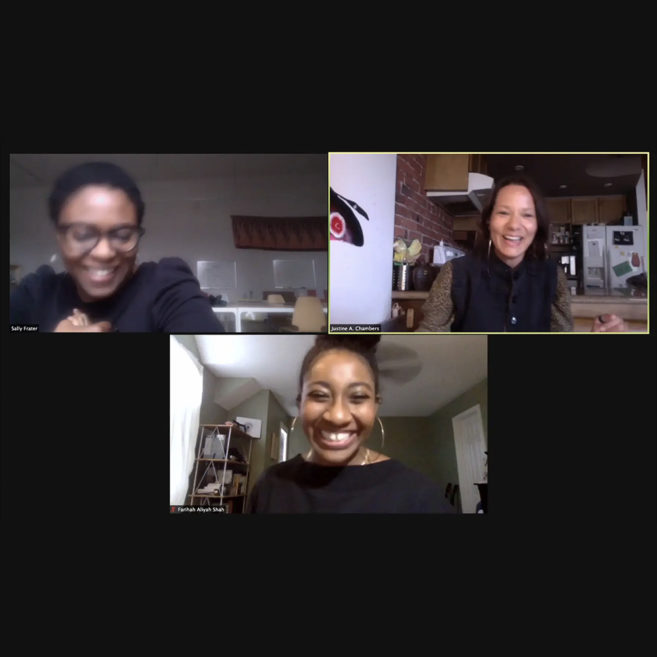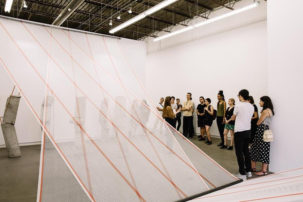CHROMA LAUNCH: HIGH T PODCAST PARTNERSHIP
LATE OCTOBER, 2020
Leah Schulli and Madelyne Beckles, co-hosts of the podcast High T, are recording a special episode with guest Chroma Spotlight artist Kiera Boult in partnership with Canadian Art by applying their process to the themes in the Fall 2020 Chroma issue and connecting them with the happenings of that week’s cultural news cycle. Schulli and Beckles met in 2013 and quickly became collaborators on curatorial projects and performance works. In 2019 they started High T, a podcast “that is supposed to be about art kind of,” meaning: High T uses art criticism to discuss and problematize the millennial zeitgeist, pop culture news and internet gleanings.
Madelyne Beckles is a multidisciplinary artist from Toronto. She holds a BFA in art history and women’s studies, and now puts her critical faculties to work as a co-host of the podcast High T. Her artwork explores themes of femininity and the body with abject aesthetics and camp humour, and has been shown at MoMA, the AGO and Miami Art Basel. She is currently the curatorial assistant of youth and engagement at the AGO.
Leah Schulli is an Alberta-born, Toronto-based installation artist, curator and writer with a BFA in print media from Concordia University. Schulli explores consumer and brand culture and its distribution and circulation of desire in a variety of social platforms. Her sculptural works combine humour and material presence with criticality. The line between the young, socially conscious consumer and the inherently capitalist nature of online self-promotion/trends is often brought into question. She uses her knowledge of the cultural zeitgeist as well as her penchant for art criticism as the co-host of the podcast High T, which she also co-produces.
Kiera Boult is an interdisciplinary artist and performer from Hamilton. Boult’s practice utilizes camp and comedy to skeptically address issues that surround the role and/or identity of the artist and the institution. In 2019, Boult was the recipient of the Hamilton Emerging Visual Artist Award. Her work has been exhibited at the Art Gallery of Ontario, the Art Gallery of Hamilton, and Trinity Square Video. She has participated in the Art Gallery of York University’s final Performance Bus, 7a*11D’s 7a*md8 – ONLINE and Life of a Crap Head’s Doored. Boult appears in the recent Chroma Issue of Canadain Art. She holds a BFA in Criticism and Curatorial Practice from OCAD University and is currently Vtape’s Submissions, Collections & Outreach Coordinator.

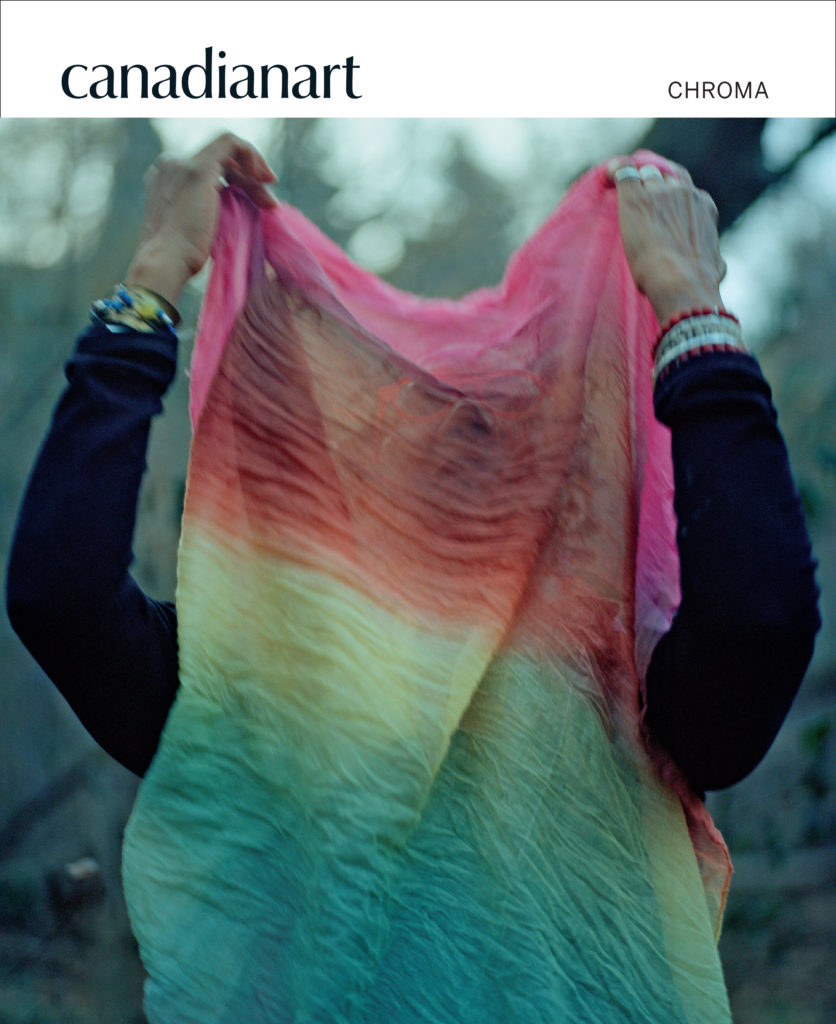 Canadian Art’s Fall 2020 issue, “Chroma.” Cover image: S*an D. Henry-Smith, dusk settles (NourbeSe behind the veil), 2019. Photograph, dimensions variable.
Canadian Art’s Fall 2020 issue, “Chroma.” Cover image: S*an D. Henry-Smith, dusk settles (NourbeSe behind the veil), 2019. Photograph, dimensions variable.
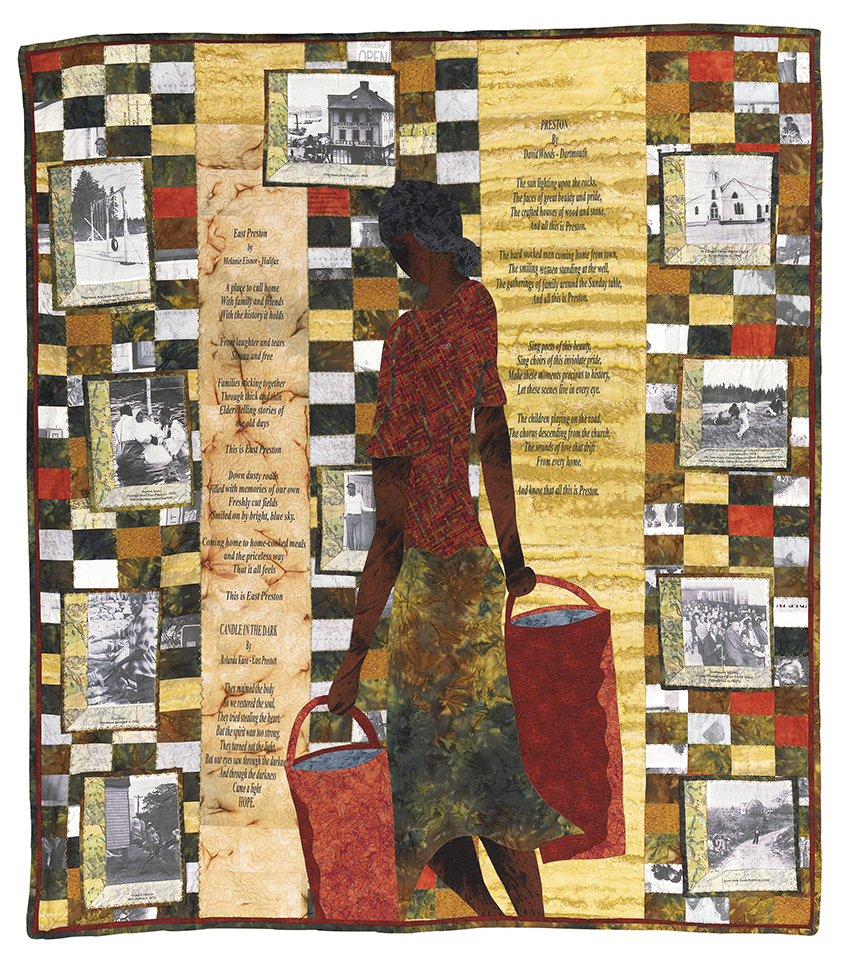 Preston , 2007. Designed by David Woods and quilted by Laurel Francis. Pieced, appliquéd, machine- and hand-stitched, hand-dyed quilt with photo transfers, 1.47 x 1.32 m. Images on quilt courtesy the Black Artists Network of Nova Scotia.
Preston , 2007. Designed by David Woods and quilted by Laurel Francis. Pieced, appliquéd, machine- and hand-stitched, hand-dyed quilt with photo transfers, 1.47 x 1.32 m. Images on quilt courtesy the Black Artists Network of Nova Scotia.
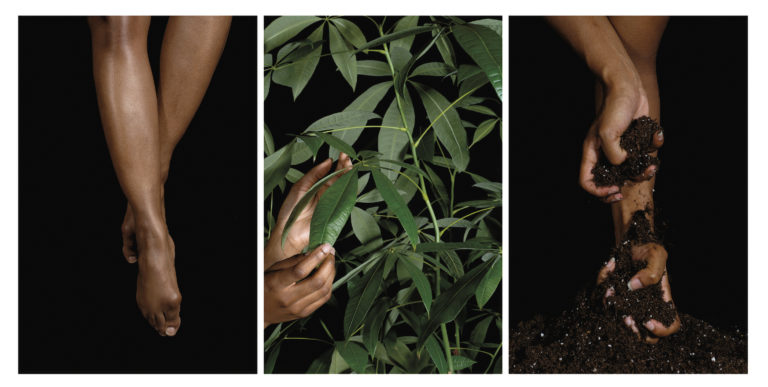 Farihah Aliyah Shah, (from left) Untitled (legs), Laden Hands and Untitled (Roots) (from the series Billie Said, 'Strange Fruit'), 2017. Archival digital prints, 99 x 66 cm each.
Farihah Aliyah Shah, (from left) Untitled (legs), Laden Hands and Untitled (Roots) (from the series Billie Said, 'Strange Fruit'), 2017. Archival digital prints, 99 x 66 cm each.
 Justine A. Chambers and Laurie Young, One hundred more, 2019. Performance at Sophiensaele Berlin, December 2019. Photo Oliver Look.
Justine A. Chambers and Laurie Young, One hundred more, 2019. Performance at Sophiensaele Berlin, December 2019. Photo Oliver Look.

